We are still alive even as we ate a whole can of surströmming. I know, I know, somewhere else the REAL men eat a can of surströmming by themselfs. And not the sissy style we had (with no heads) but the whole fish. At least we did not have the most girly stuff, the filés only. Sursrömming = fermented Baltic herring, hapansilakka in Finnish.
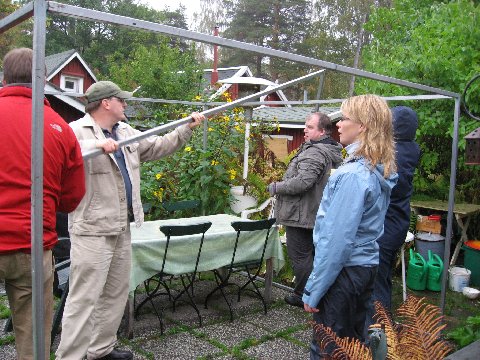
The day was foggy and grey, but our minds spirited. We gathered to möksä and put up our palace (=tent) for the night.
It was like being on a fieldtrip to outdoors.
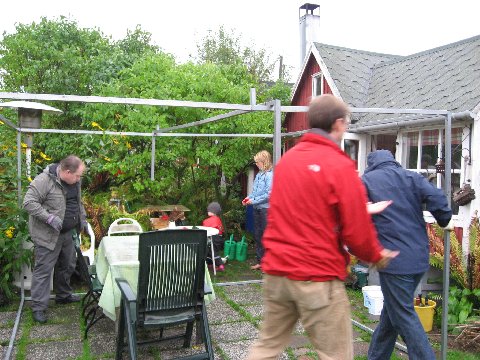
We worked good together.
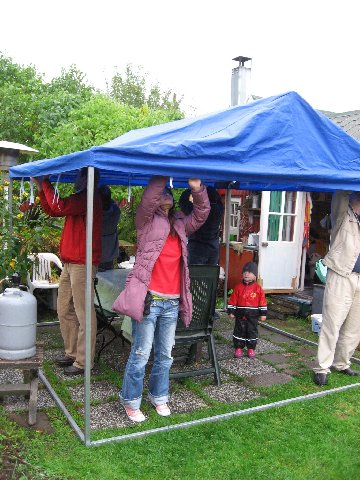
Some warming drinks were served and more and more people find their way to the gathering. We were quite internationall that day as we had a real Surstömming adjutant from Sweden (originally from Vittulanjänkä, Pajala!), true friends of surstömming from Tartu, Estonia and Anita from Hong Kong.
Our visitor from Häme gets a special nomination as well as she arrived to this fiesta even (or maybe just that's the right attitude) as she is allegic to fish. To make it more even Heka took care of our minorities quota and invited his friend to place as well.
Here we can see how happy one can be as she sits in a tent a can of rotten fish and a bottle of vodka front of her.
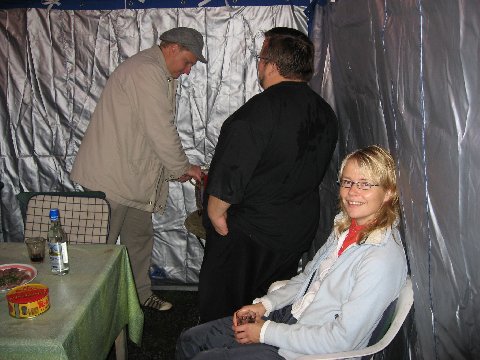
We were having good time as our expert opened the can.
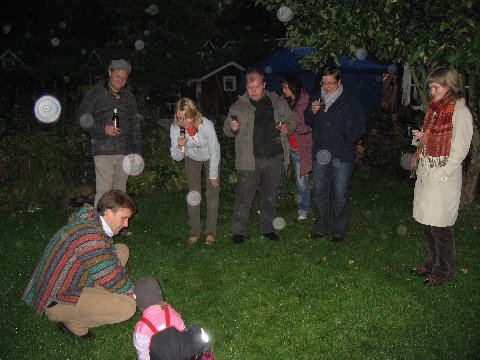
It must be on her genes that she is not reacting to the foul smell.
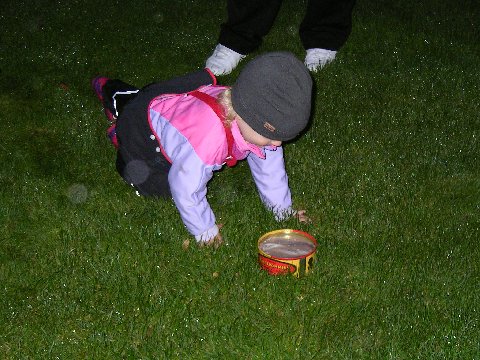
Our tablesetting was quite traditional with swedish tunnbröd, onions, tomatoes, potatoes and sourcream. Lots of alcoholic drinks were served as well. As you can read below in Wikipedia, one thing we did wrong- we forgot to drink milk. The side effects of beer was noticed ;)
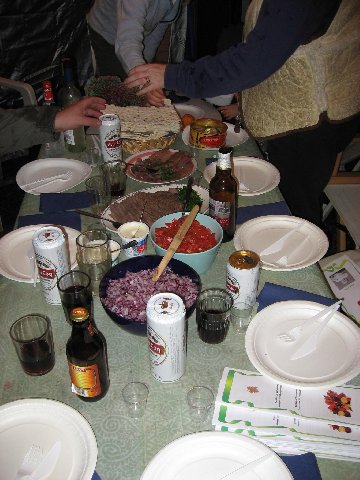
One thing we had learned from our previous year was to use plastic knives and forks as well as paperplates. And we took the trash immediately after the party instead to leave the bags for the crows to mess up. I'm proud of us being cabable to learn.
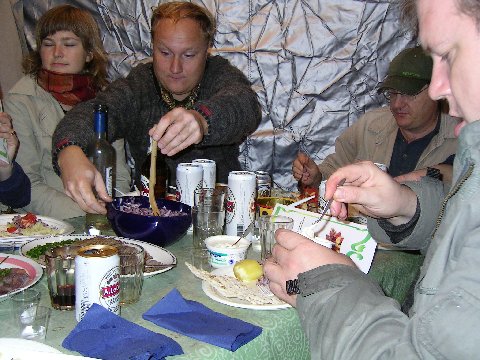
But the food was good. Notice those papers on the table. We did sing quite a bit.
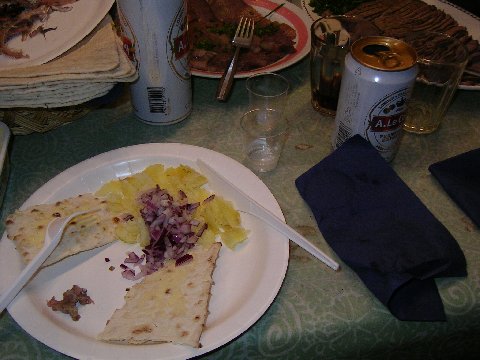
Ja sitten me syötiin! There is quite a sad amount of fish on this plate.

Most likely as much as there is in this bite. Can't you just see see how good it is!
Surströmming
From Wikipedia, the free encyclopedia

Surströmming (sour herring) is a Swedish delicacy consisting of fermented Baltic herring. Surströmming is sold in cans, which when opened release a strong, foul smell. It is for this particular smell, which is similar to fish gone bad or garbage left out in the sun for a couple of days, that surströmming is infamous in popular culture, and it is often held that people who try surströmming can be confident that they will never forget it. Because of the smell, the dish is often eaten outdoors. However, opening the can under water somewhat lessens the smell, as well as keeping the person opening it from getting soaked in brine, as the fermentation often builds up a considerable pressure inside the can. The Finnish word is hapansilakka.
The herring is caught in spring, when it is in prime condition and just about to spawn. The herring are fermented in barrels for one to two months, then tinned where the fermentation continues. Half a year to a year later, gases have built up sufficiently for the once cylindrical tins to bulge into a more rounded shape. These unusual containers of surströmming can be found in supermarkets all over Sweden. However, certain airlines have banned the tins on their flights, considering the pressurized containers to be potentially dangerous.[1] Species of Haloanaerobium bacteria are responsible for the in-can ripening. These bacteria produce carbon dioxide and a number of compounds that account for the unique odor: pungent propionic acid, rotten-egg hydrogen sulfide, rancid-butter butyric acid, and vinegary acetic acid.[2]
One proposed explanation of the origins of this method of preservation is that it began long ago, when brining food was quite expensive due to the cost of salt. When fermentation was used, just enough salt was required to keep the fish from rotting.
Eating surströmming
Surströmming is often eaten with a kind of bread known as tunnbröd, literally "thin bread". This thin, either soft or crispy bread (not to be confused with crisp bread) comes in big square sheets. The bread is buttered and then topped with some chopped (usually red) onions and boiled potatoes that have been peeled and sliced. The potatoes are of a special kind, called mandelpotatis or almond potatoes.
A whole fish is forked from the tin and sliced down the middle. Its soft insides are removed, including the dark gray roe, and then the fish is to be opened up like a book. The red flesh is stamped with a fork, loosening the bone and so that it can be filleted. Small pieces are then cut ready for the sandwich. The final touch is a big dollop of gräddfil (fat fermented milk) or sometimes the french equivalent crème fraîche (which is quite similar to gräddfil but even richer in fat). The soft tunnbröd can then be folded or rolled up, while the crispy variety is usually eaten as a sandwich.
The surströmming sandwich is traditionally served with a glass of cold milk and a snaps. Beer has also become popular, although the combined effects of the surströmming and the release of carbon dioxide from the beer can be quite unpleasant for some time after the meal.
Lots of people do not care for surströmming, and it is generally considered to be an acquired taste. Conversely, it is a food which is subject to strong passions (as is lutefisk), and several people have liked its taste on the first try [